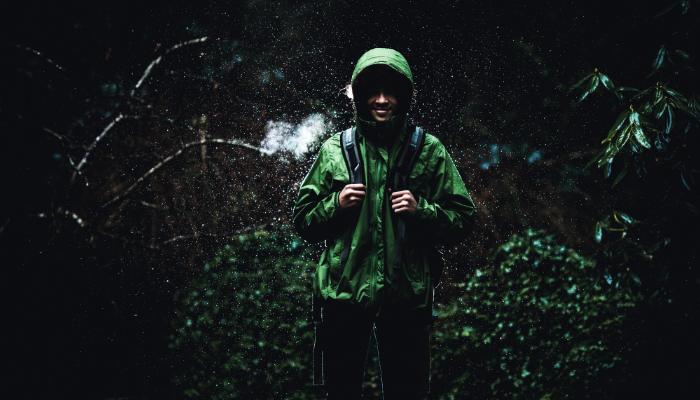When you’re preparing for a multi-day hiking adventure, your backpack becomes more than just a container — it becomes your mobile home, survival kit, and trusted companion on the trail. Unlike daypacks used for short hikes, a professional outdoor backpack designed for multi-day treks must strike the perfect balance between capacity, comfort, durability, and accessibility.
Choosing the wrong backpack can lead to back pain, sore shoulders, poor weight distribution, or even unsafe situations when you’re deep in the wilderness. The right pack, on the other hand, can help you move efficiently, carry your gear comfortably, and enjoy the journey rather than struggle with your equipment.
This comprehensive guide will cover everything you need to know before investing in a multi-day hiking backpack, including:
-
✅ How to determine the right capacity for your trip length
-
✅ Key features that make a backpack suitable for long treks
-
✅ Understanding fit and suspension systems
-
✅ Materials, weather resistance, and durability considerations
-
✅ Best professional outdoor backpack recommendations for 2025
-
✅ Expert packing and maintenance tips
Let’s dive in and make sure you choose a backpack that helps you hike further, safer, and more comfortably.
Capacity – How Big Should Your Backpack Be?
One of the first questions hikers ask is: How many liters should my backpack hold for a multi-day trip? The answer depends on trip length, terrain, and weather conditions.
Backpack Capacity by Trip Length
-
1–2 nights (short trek): 35–50 liters
-
3–4 nights (medium trek): 50–65 liters
-
5+ nights (long expedition): 65–80 liters
🔑 Pro Tip: If you’re hiking in cold weather, always size up. Bulky winter clothing, sleeping bags, and extra fuel take up more space than summer gear.
Suspension System and Fit
A backpack’s fit is just as important as its size. Poor weight distribution leads to sore shoulders, strained hips, and long-term injuries.
Adjustable Torso Length
-
Look for packs with adjustable back panels to fit your torso height.
-
A properly adjusted pack places 80% of weight on your hips and 20% on your shoulders.
Hip Belts
-
Should be wide, padded, and contoured.
-
Transfer weight away from your spine.
-
Some advanced models offer pivoting hip belts that move naturally with your stride.
Shoulder Straps and Load Lifters
-
Should be ergonomic, padded, and adjustable.
-
Load lifter straps (angled at 45°) prevent the pack from pulling backward.
Ventilated Back Panels
-
Prevent overheating and sweat accumulation.
-
Mesh suspension systems like Osprey’s AirSpeed keep airflow consistent.
Materials and Durability
Your backpack will face rain, UV rays, abrasion from rocks, and constant handling. Choose materials that are lightweight yet rugged.
-
Ripstop Nylon (210D–420D): Lightweight, affordable, durable.
-
Cordura Nylon: Extremely abrasion-resistant, ideal for rough trails.
-
Dyneema Composite Fabric (DCF): Ultralight and waterproof, used in premium packs.
-
Waterproof Coatings: PU or silicone treatments increase weather resistance.
❄️ For winter treks, prioritize water resistance and cold-proof zippers.
Essential Features for Multi-Day Hiking Backpacks
When comparing professional backpacks, look for these must-have features:
Multiple Access Points
-
Top-loading is standard, but side and front zippers allow faster access.
Hydration Compatibility
-
Internal sleeves for hydration bladders with hose routing.
External Attachment Points
-
Loops and straps for trekking poles, ice axes, crampons, or sleeping pads.
Removable Lid or Brain
-
Provides extra storage; some convert into a daypack.
Compression Straps
-
Keep your load compact and stable when not fully packed.
Rain Cover
-
Some backpacks include built-in rain covers; otherwise, buy one separately.
Best Professional Outdoor Backpacks for Multi-Day Hiking (2025 Edition)
Here are some of the top recommended models for 2025:
1. Osprey Atmos AG 65 (Best Overall)
-
Capacity: 65L
-
Why it’s great: Anti-Gravity suspension system for unmatched comfort.
-
Best for: 3–6 day treks, mixed terrain.
2. Gregory Baltoro 75 (Best for Heavy Loads)
-
Capacity: 75L
-
Why it’s great: Customizable hip belt, excellent weight distribution.
-
Best for: Long treks with heavy camping gear.
3. Deuter Aircontact Core 60+10 (Best for Durability)
-
Capacity: 60+10L
-
Why it’s great: Extra-tough fabrics, adjustable fit, expandable volume.
-
Best for: Harsh conditions, rocky trails.
4. Arc’teryx Bora AR 63 (Premium Choice)
-
Capacity: 63L
-
Why it’s great: RotoGlide hip belt, waterproof materials, alpine design.
-
Best for: Technical expeditions, alpine hiking.
5. Hyperlite Mountain Gear 4400 Southwest (Ultralight Option)
-
Capacity: 70L
-
Why it’s great: Dyneema construction, extremely lightweight yet durable.
-
Best for: Ultralight backpackers who don’t compromise on strength.
Packing Tips for Multi-Day Hiking
A professional backpack works best when packed strategically.
-
Heavy items (food, water, cooking gear) go close to your spine.
-
Medium-weight items (clothes, tent) go in the middle.
-
Light items (sleeping bag, insulation layers) at the bottom.
-
Frequently used items (snacks, rain jacket, map) in the top lid or side pockets.
🔑 Remember: Pack for efficiency, not just capacity. Overpacking slows you down.
Maintenance and Longevity
A good backpack is an investment. Maintain it well, and it will last for thousands of miles.
-
Clean with mild soap and lukewarm water (never machine wash).
-
Dry completely before storage.
-
Store in a cool, dry place without heavy weight pressing on it.
-
Reapply waterproofing spray every season.
Future Trends in Hiking Backpack Design (2025–2030)
-
Eco-Friendly Materials: More brands are adopting recycled fabrics.
-
Smart Features: GPS trackers, solar charging panels, digital hydration monitors.
-
Ultralight Focus: Shift toward Dyneema and carbon fiber frames.
-
Custom Fit Systems: AI-based fitting technology in high-end backpacks.
Conclusion
Choosing the right professional backpack for multi-day hiking is one of the most important gear decisions you’ll make. The wrong pack can make every mile feel like a struggle, while the right one can transform your trek into a comfortable and enjoyable adventure.
To summarize:
-
Pick the right capacity (35–80L, depending on trip length).
-
Focus on fit and suspension systems for comfort.
-
Choose durable, weather-resistant materials.
-
Look for features that match your hiking style.
-
Invest in a trusted brand and model that fits your needs.
With the right backpack, you’ll be prepared for mountain passes, forest trails, alpine ridges, and everything in between.
Your adventure is waiting — just make sure your backpack is ready for it.



